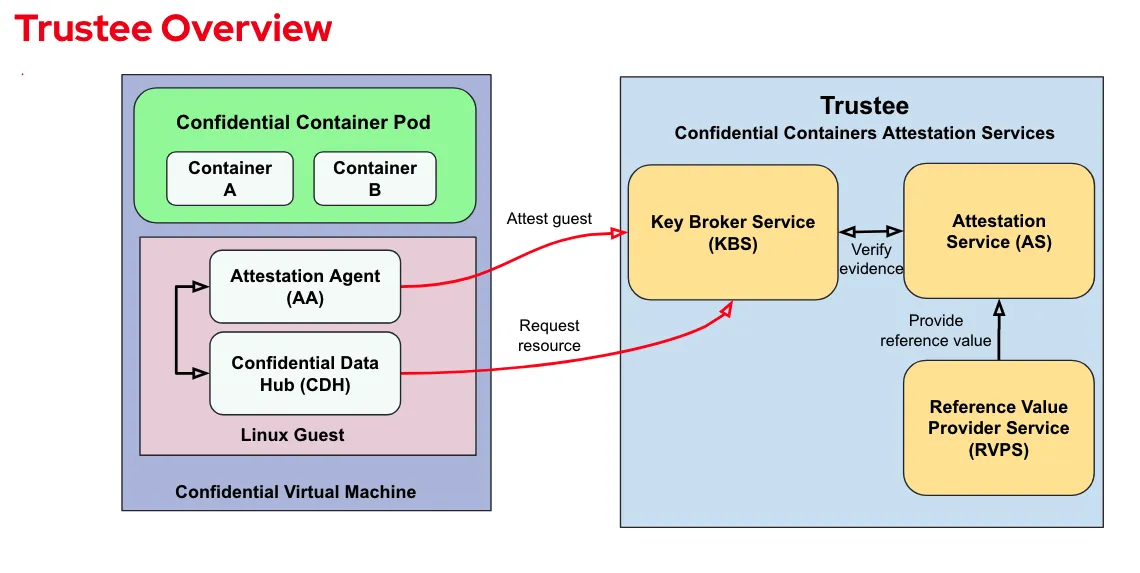
Deploying
Install an OpenShift Cluster on Azure
Update the required Azure configuration and secrets
./pattern.sh make installWait: The cluster needs to reboot all nodes at least once, and reprovision the ingress to use the let’s encrypt certificates.
If the services do not come up use the ArgoCD UI to triage potential timeouts.
Simple Confidential container tests
The pattern deploys some simple tests of CoCo with this pattern.
A "Hello Openshift" (e.g. curl to return "Hello Openshift!") application has been deployed in three form factor.
A vanilla kubernetes pod at
oc get pods -n hello-openshift standardA confidential container
oc get pods -n hello-openshift secureA confidential container with a relaxed policy at
oc get pods -n hello-openshift insecure-policy
In this case the insecure policy is designed to allow a user to be able to exec into the confidential container. Typically this is disabled by an immutable policy established at pod creation time.
Doing a oc get pods for either of the pods running a confidential container should show the runtimeClassName: kata-remote for the pod.
Logging into azure once the pods have been provisioned will show that each of these two pods has been provisioned with it’s own Standard_DC2as_v5 virtual machine.
oc exec testing
In a OpenShift cluster without confidential containers, Role Based Access Control (RBAC), may be used to prevent users from using oc exec to access a container container to mutate it.
However:
Cluster admins can always circumvent this capability
Anyone logged into the node directly can also circumvent this capability.
Confidential containers can prevent this. Running: oc exec -n hello-openshift -it secure — bash will result in a denial of access, irrespective of the user undertaking the action, including kubeadmin.
For running this with either the standard pod oc exec -n hello-openshift -it standard — bash, or the CoCo pod with the policy disabled oc exec -n hello-openshift -it insecure-policy — bash will allow shell access.
Confidential Data Hub testing
Part of the CoCo VM is a component called the Confidential Data Hub (CDH), which simplifies access to the Trustee Key Broker service for end applications. Find out more about how the CDH and Trustee work together here.

The CDH presents to containers within the pod (only), via a localhost URL. The CoCo container with an insecure policy can be used for testing the behaviour.
oc exec -n hello-openshift -it insecure-policy — bashto get a shell into a confidential containerTrustee’s configuration specifies the list of secrets which the KBS can access with the
kbsSecretResourcesattribute.Secrets within the CDH can be accessed (by default) at
http://127.0.0.1:8006/cdh/resource/default/$K8S_SECRET/$K8S_SECRET_KEY.In this case
http://127.0.0.1:8006/cdh/resource/default/passphrase/passphraseby default will return a string which was randomly generated when the pattern was deployed.This should be the same as result as
oc get secrets -n trustee-operator-system passphrase -o yaml | yq '.data.passphrase'| base64 -d`Tailing the logs for the kbs container e.g.
oc logs -n trustee-operator-system kbs-deployment-5b574bccd6-twjxh -fshows the evidence which is flowing to the KBS from the CDH.
